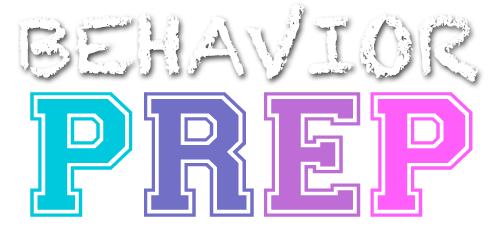I.5 Identify and apply empirically validated and culturally responsive performance management procedures (e.g., modeling, practice, feedback, reinforcement, task clarification, manipulation of response effort)
Performance management involves implementing strategies to enhance the effectiveness of supervisees in delivering behavior-analytic services. Empirically validated performance management procedures ensure supervisees meet high standards of competency. Culturally responsive practices consider the supervisee’s background, communication style, and values to foster engagement, trust, and effective learning.
Modeling
- Demonstrating desired skills or behaviors provides supervisees with a clear example to imitate.
- Ensure the demonstration is precise, aligned with evidence-based practices, and adapted to the supervisee’s learning style.
Example: A BCBA models the correct use of a least-to-most prompting hierarchy during a teaching session, allowing the supervisee to observe the timing and application.
Practice
- Supervisees must have structured opportunities to practice skills in a controlled environment before implementing them in real scenarios.
- Ensure practice sessions reflect realistic conditions and provide repetition to build fluency.
Example: A supervisee practices implementing a behavior intervention plan during role-play scenarios with the BCBA before working directly with clients.
Feedback
- Feedback must be specific, constructive, and delivered immediately following the observed behavior to maximize effectiveness.
- Tailor feedback delivery to the supervisee’s cultural preferences (e.g., public versus private feedback).
Example: After observing a supervisee’s session, the BCBA provides feedback such as, “You did a great job delivering immediate reinforcement after the target behavior. Let’s work on maintaining eye contact during the client’s response to improve rapport.”
Reinforcement
- Reinforce desired behaviors to increase their frequency. Use positive reinforcement, such as praise or professional recognition, to motivate supervisees.
- Ensure the reinforcement is meaningful to the supervisee and culturally appropriate.
Example: The BCBA recognizes the supervisee’s improvement in data collection accuracy during a team meeting, boosting their confidence and encouraging continued effort.
Task Clarification:
- Clearly define the supervisee’s responsibilities and expectations to reduce ambiguity.
- Use job aids, visual checklists, or step-by-step instructions for clarity.
Example: A BCBA provides a checklist detailing the steps for implementing a token economy, ensuring the supervisee understands each component.
Manipulation of Response Effort
- Modify the difficulty of tasks to promote success and build momentum.
- Gradually increase task complexity as the supervisee gains confidence and competence.
Example: A supervisee first practices graphing a single data point, then progresses to creating a full graph and interpreting trends over multiple sessions.
Empirically validated and culturally responsive performance management procedures ensure supervisees develop the skills to provide high-quality services. Supervisors can foster supervisee competence, confidence, and job satisfaction by incorporating modeling, practice, feedback, reinforcement, task clarification, and response effort manipulation while respecting cultural variables. This approach enhances both professional growth and client outcomes.
